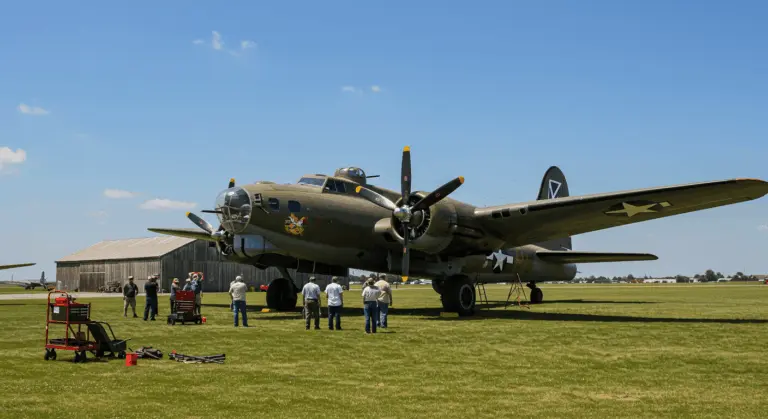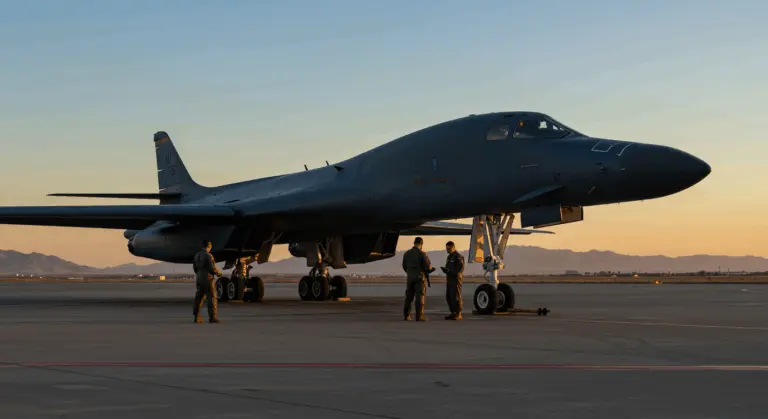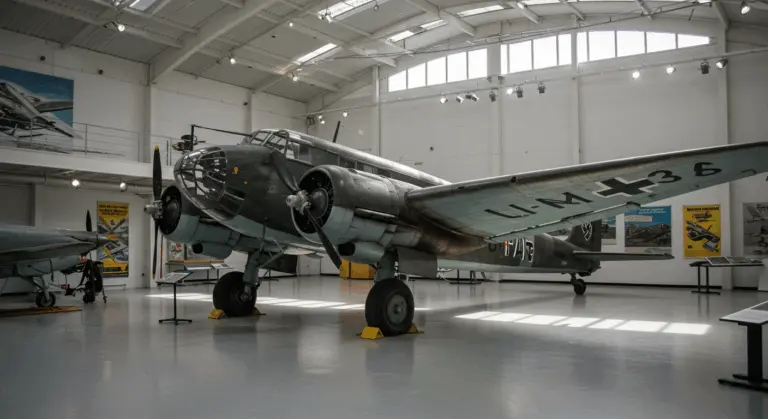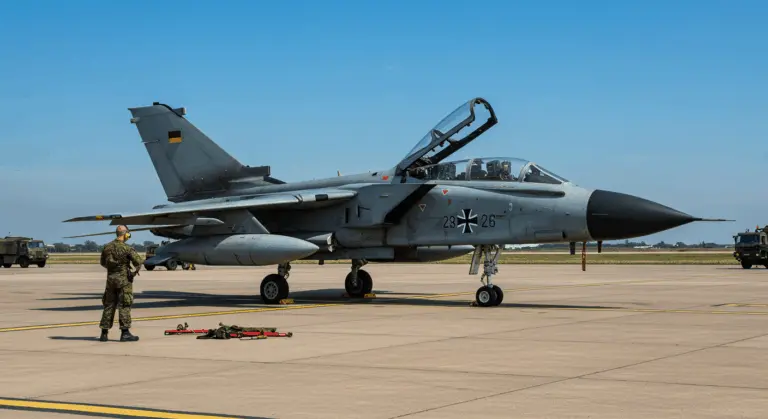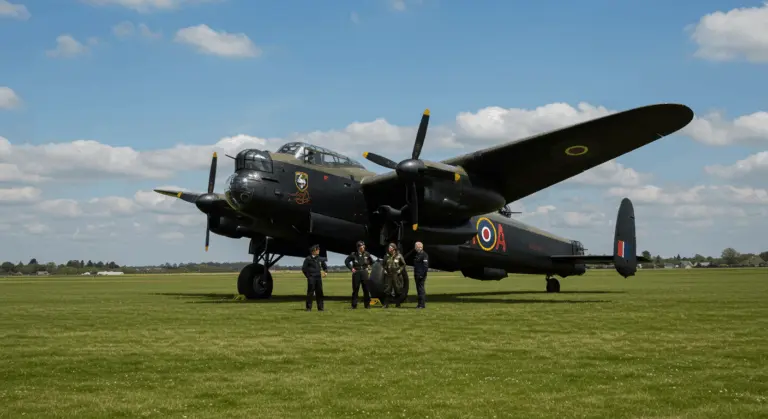Overview of the B-25 Mitchell Bomber
The North American B-25 Mitchell stands as one of the most iconic aircraft of World War II. Introduced in 1941, this American medium bomber was named in honor of Brigadier General William “Billy” Mitchell, a pioneer of U.S. military aviation who advocated for air power.
What truly distinguished the B-25 Mitchell was its remarkable versatility and rugged durability. The aircraft gained worldwide recognition when Lt. Col. James H. Doolittle selected it for the daring Tokyo bombing mission—America’s bold response to Pearl Harbor. The B-25 was the only American bomber capable of launching from an aircraft carrier while maintaining sufficient range to reach Japan, showcasing its extraordinary operational adaptability.
The B-25 carried impressive firepower. It could carry up to 3,600 pounds of bombs while equipped with defensive armament—machine guns strategically positioned in the nose, waist, tail, and dorsal turret. Later variants received additional nose guns designed for effective ground strafing runs, making the aircraft an even more capable ground-attack platform.
Perhaps most legendary was the B-25’s extraordinary structural resilience. These bombers absorbed tremendous punishment yet kept flying. Consider ‘Patches’—a B-25 that completed over 300 combat missions despite bearing more than 400 patched holes from enemy fire. This remarkable example epitomized the exceptional engineering and unwavering durability that pilots came to trust with their lives.
Design and Development of the B-25
The B-25 Mitchell was designed from the ground up as a medium bomber, differentiating it from its larger contemporary, the B-24 Liberator, which was developed as a long-range heavy bomber. North American Aviation began developing the aircraft in the late 1930s in response to a U.S. Army Air Corps requirement for a medium bomber with improved performance characteristics.
The design philosophy behind the B-25 centered on creating a versatile platform capable of excelling at medium altitudes while retaining robust low-level capabilities. This approach proved valuable, as the aircraft would later dominate in low-altitude attack missions. The twin-engine configuration provided an excellent balance between power, range, and reliability, with Wright R-2600 Cyclone radial engines delivering outstanding performance.
An important innovation was its tricycle landing gear—an uncommon feature that provided superior ground handling and visibility compared to conventional tail-dragger designs.
Throughout its production lifecycle, the B-25 underwent continuous refinement based on combat experience and evolving tactical demands. This evolutionary approach ensured the aircraft remained tactically relevant, continuously adapting to new roles across diverse theaters of war.
B-25 Variants – An Overview
The B-25 evolved significantly through several key variants:
-
B-25A: The initial model with self-sealing fuel tanks and crew armor.
-
B-25B: Added defensive turrets and was the variant used in the Doolittle Raid.
-
B-25C/D: The first mass-produced versions, featuring more powerful engines and de-icing equipment.
-
B-25G: Introduced a 75mm cannon in the nose for anti-shipping and ground attack missions.
-
B-25H: Featured a lighter 75mm cannon and more forward-firing machine guns, enhancing its ground-attack capabilities.
-
B-25J: The most produced variant, combining the bombing capabilities of earlier models with the heavy forward firepower of the H model.
-
Other Variants: Specialized versions were developed for training (AT-24) and reconnaissance (F-10).
Operational History of the B-25 Mitchell
The B-25 Mitchell served with distinction across every theater of World War II, showing great versatility in diverse combat environments. Though originally conceived as a medium-altitude bomber, the aircraft discovered its true calling as a devastating low-level attack platform. In the Pacific and Mediterranean theaters, its effective combination of speed, firepower, and durability proved invaluable against enemy shipping, airfields, and ground installations.
The B-25’s first major operation came with the legendary Doolittle Raid on April 18, 1942. Sixteen B-25Bs launched from the USS Hornet to strike Tokyo and other Japanese cities—an unprecedented feat. This bold carrier launch of medium bombers showed American determination while forcing Japan to divert precious resources to homeland defense, creating strategic advantages far exceeding the raid’s physical damage.
In the Pacific Theater, the B-25 became known for its effective skip-bombing techniques against Japanese shipping. Pilots would streak in at masthead height, releasing bombs that skipped across the water before slamming into ships’ hulls—a highly effective tactic. The later cannon-equipped variants were particularly feared, strafing vessels with their heavy forward firepower.
The B-25 achieved several historic firsts: the first aircraft to carry a 75mm cannon into combat and the first to sink a submarine with one. Its proven effectiveness led to widespread adoption by Allied air forces, including the Soviet Union, United Kingdom, Australia, and China.
The Doolittle Raid – A Turning Point
The Doolittle Raid of April 18, 1942, remains one of World War II’s boldest military operations—a defining moment for the B-25 Mitchell bomber. Lieutenant Colonel James H. Doolittle led this unprecedented mission: 16 B-25B bombers launching from the aircraft carrier USS Hornet to strike Tokyo and other Japanese cities. This feat was previously deemed impossible given medium bombers’ size and carrier operation limitations.
The raid demanded extensive B-25 modifications and intensive crew training. Bombers were stripped of non-essential equipment to shed weight and fitted with additional fuel tanks for extended range. Crews practiced short takeoffs relentlessly at Elgin Field in Florida, mastering airborne launches in under 500 feet—dramatically shorter than the B-25’s normal takeoff roll. This preparation proved vital when Japanese vessels spotted the carrier task force prematurely, forcing bombers to launch 200 miles farther from Japan than planned.
While the physical damage to Japanese targets remained relatively modest, the psychological impact was enormous. For Americans still reeling from Pearl Harbor and subsequent defeats, the raid provided a vital morale boost, proving Japan’s homeland vulnerability. For Japanese military leaders, the shocking realization that their homeland could be bombed triggered a strategic reassessment, forcing them to divert frontline fighter aircraft to home defense.
The raid clearly demonstrated the B-25’s exceptional versatility and reliability. Despite launching in rough seas, flying hundreds of miles to targets, then continuing to China (carrier landing being impossible), most crews successfully completed their bombing runs. Though most aircraft crash-landed in China or were abandoned by bailing crews, the mission demonstrated the B-25’s ability to adapt to extraordinary circumstances—a defining characteristic throughout its wartime service.
Legacy and Preservation of the B-25
The B-25 Mitchell’s legacy extends beyond its wartime service, establishing its place among aviation history’s most important aircraft. The Doolittle Raid alone would have ensured its historical importance, yet the bomber’s versatility and effectiveness across multiple war theaters expanded its legacy considerably. Its ability to adapt seamlessly to various combat roles—traditional bombing, ground attack, anti-shipping, and reconnaissance—represented American industrial and tactical innovation during a pivotal war period.
Today, preserving remaining B-25s provides living proof to the aircraft’s historical significance. Over 40 B-25s remain airworthy, regularly gracing reshows across the United States and Europe. There, they continue captivating audiences with their distinctive silhouette and thunderous Wright Cyclone engines. These flying examples create a direct connection to the past, allowing modern spectators to experience the sights and sounds once common over wartime skies.
Museums worldwide house additional preserved examples—approximately 120 non-flying B-25s on static display. These aircraft serve as important educational tools, helping new generations grasp the technological achievements and human sacrifices of World War II. Many preserved bombers have been meticulously restored to wartime configurations, complete with authentic markings and equipment, offering valuable insights into the aircraft’s design and operation.
The B-25’s cultural impact has been strengthened through popular media appearances. Most notably, the aircraft featured prominently in the film adaptation of Joseph Heller’s “Catch-22,” where a fleet of B-25s was assembled for filming. This included the aircraft now displayed at Frisson Air Museum, known as “Passionate Paulette.” These cultural touchpoints have maintained public awareness and appreciation of the B-25, ensuring successive generations remember its contributions to aviation history and Allied victory in World War II.
Specifications of the B-25 Mitchell
| Specification | Details |
|——————–|——————————————————————————–|
| Dimensions | Wingspan: ~67 ft; Length: ~53 ft; Wing Area: 610 sq ft |
| Power plant | Two 1,700 hp Wright R-2600 Cyclone radial engines |
| Performance | Maximum Speed: 285 mph; Service Ceiling: 24,200 ft |
| Offensive Load | Up to 3,600 lbs of bombs internally; later variants equipped with a 75mm cannon. |
| Defensive Arms | Up to 18 × .50 caliber machine guns (B-25J) in nose, waist, turret, and tail positions. |
Conclusion – The B-25 Mitchell’s Impact
The B-25 Mitchell’s impact on World War II and aviation history cannot be overstated. From its dramatic Doolittle Raid debut to widespread service across all war theaters, the aircraft showed great versatility and effectiveness few contemporary bombers could match. The B-25’s ability to launch from an aircraft carrier—proving medium bombers could operate from naval platforms—marked a major advance in joint operations, dramatically expanding strategic options for military planners.
Beyond technical achievements, the B-25 Mitchell made important psychological contributions to the Allied war effort. The Doolittle Raid, though limited in physical damage, gave an enormous morale boost to America at a critical juncture when the nation desperately needed reassurance of Japan’s vulnerability. Simultaneously, it compelled Japanese military leaders to divert precious resources to homeland defense, creating strategic advantages extending far beyond the raid itself.
The B-25’s legacy is evident in its influence on aircraft design and tactical doctrine. Its successful dual employment as traditional bomber and ground-attack platform showed the great value of flexible, multirole aircraft—a concept that would become increasingly vital in post-war military aviation. Lessons learned from B-25 operational history directly informed subsequent attack aircraft development and the tactics they would employ.
Today, the B-25 Mitchell remains a strong symbol of American industrial might, engineering excellence, and the courage of aircrews who flew it into combat. Its presence in popular culture and at reshows ensures its legacy persists, enabling new generations to appreciate its historic contributions. The B-25 Mitchell serves as a lasting testament to innovation under pressure and the significant impact a well-designed aircraft can have in the course of global conflict.

